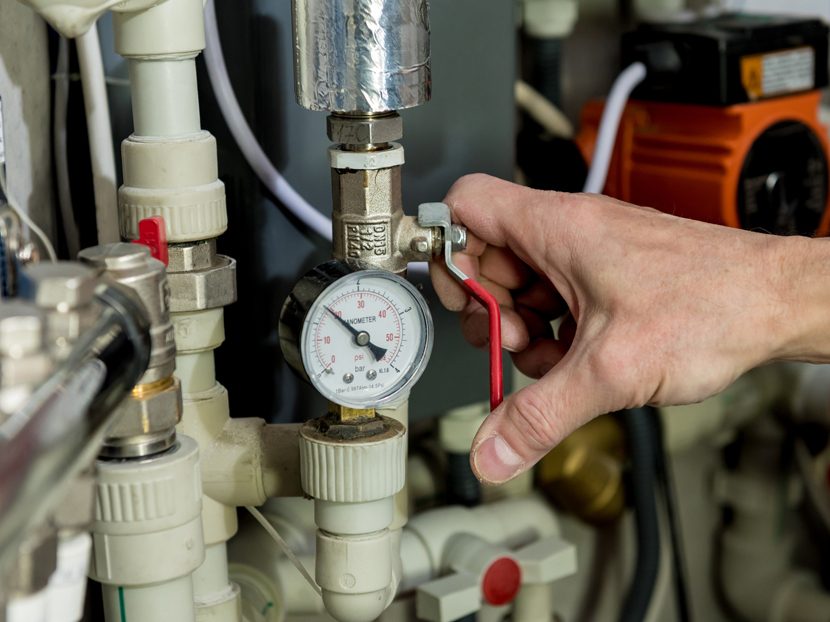Technology is Changing — Are You?
Combining old and new products and techniques can be a fun way to help someone “discover” the plumbing and heating trades.

I am coming at this column with quite a few years in the industry. I started working with my dad in his plumbing business as a teenager. As crazy as it seems, that was back in the 1960s. So I’ve seen a few things.
Perhaps the most significant change, and the fastest, has been in the way we stay in touch. Particularly in these COVID-19 times, we have multiple means to communicate, around the world, virtually instantly — with not only an audio connection but visually.
With this technology so readily available, it is easy — maybe too easy — to get poll information regarding a product, concept, technology, etc. Conversations that were commonly carried out at supply house counters are now made via a small keyboard, or verbal text even. The hood of your truck at the end of the day was how we communicated with the team.
With everything going on in the world right now, it has been months since I have had a face-to-face with my work colleagues. And it could be many more months until we meet or gather at a trade event in person.
So, the conversations that have been going on for years in our industry continue, albeit in different ways. Here are a few time-tested favorites:
Sweat or press? Now there is a topic that lights fires and elicits opinions. I have to chuckle; when I started down the plumbing path, lead joints were still commonplace. I recall running threaded galvanized water piping in a home on Lago Erie. The owner, an old-school tool and die maker, just preferred threaded connections. Or maybe he just wanted to watch a plumber pipe together a job, being he was into threads in general.
As for copper-fitting types, to me, there is no right answer. Nor should there be. I feel all the current “joining” products or techniques have a place. More important is that the assembly is executed correctly; all tube or pipe needs to be prepped properly for the best results. This includes threaded, sweat, press, groove, glue, fusion — pick any method.
Granted, product failures still occur, possibly more so with products manufactured without appropriate quality control, testing or design engineering. Most often, operator error, purposeful or not, plays into a connection failure. Indeed, there is no excuse not to get properly trained on anything in this digital age. A few clicks can get you to manufacturers’ training or any skill level of YouTube “opinion piping.”
However, be careful what you ask for in your online searches. Many of us have probably seen some bizarre, often boastful, “homemade” how-to videos online. The satirical publication The Onion comes to mind when I watch some of these DIYers teach the trade.
Another favorite is the raging debate over air purgers vs. micro-bubble air separators. Having been on both sides of this product selection, I see a clear difference. I’d be surprised if the manufacturers of scoop, ramp, camelback purgers would even claim 97 percent micro-bubble elimination. Seeing a clear difference makes me wonder if stubbornness and “all-knowingness” drive low-tech decisions?
Old and new methods — together
So, my mission lately has been to “thread the needle” between new and old technology and methods. To this end, I have built as many working demos as I can dream up. My approach is to find sources for transparent materials, piping and components. Then, I assemble a system that allows folks to see what is going on inside a hydronic circuit. With online streaming and the ease of uploading videos, it has been a fun, easily shared adventure.
After finding a source for clear acrylic tube, I discovered I could build most any hydronic components from blocks or large-diameter rod stock acrylic. It is a fun medium to work with; easy to drill, machine, glue and connect to. Grip-type fittings allow me to quickly disassemble and reuse tube and parts.
I mimic as closely as possible the steel or brass versions of the components. I’ve managed to carve and machine a few circulator volutes out of a chunk of acrylic. I have air, dirt and magnetic separators. A set of clear, closely spaced tees allows viewers actually to see various flows inside the fitting assembly.
My Hot Topics and ShopTalk sessions are my platform or stage. On a recent webinar, I showed a transparent buffer tank with multiple piping connections. Injecting some food coloring allows the viewer to get a clear picture of how the flows react.
I have a few other ideas for various hydronic valves, though it may require a skill set beyond what I can accomplish with my 1945 vintage Atlas lathe. My dad bought the machine while serving in Germany during WWII!
Through these demos, I hope to attract more of the younger generation into the trades with visual examples of the work we do and how piping systems work. Salary figures and textbooks are not enough to attract young talent. Virtually every blue-collar industry is looking for employees.
Just as an aquarium is a more attractive way to discover fish, youngsters or potential newbies to our trade may be more receptive to video demos rather than a textbook or online assortment of Photobucket images.
I hope that you, like me, have gazed in amazement at the Weil-McLain steam demo trailer, watching as the steam moves through the clear piping. My motivation to create clear, working models started with that display, probably at a NAOHSM Hershey event many years ago.
Even in these confusing, information-overloaded times we live in, you can still find verifiably accurate and technically sound information scattered throughout Bizzaro World.
Seek the truth, Grasshopper. Explore the options, embrace the technology and pass it forward. The world depends now — and more so going forward — on the tradesfolk of the world. We ensure that the movement of water and heat and waste is properly accomplished. We help keep disease at bay, keep flows going in the correct direction and ensure safe power generation.
Make us all proud.





